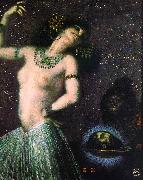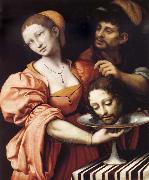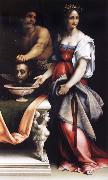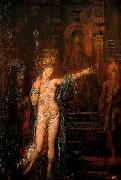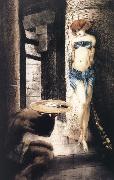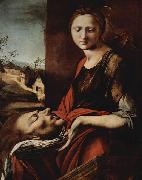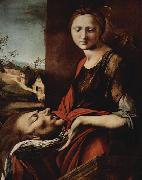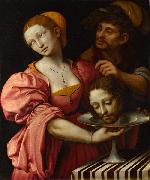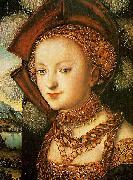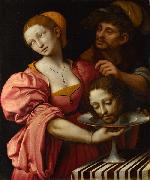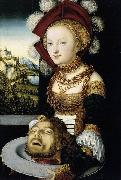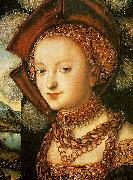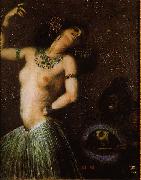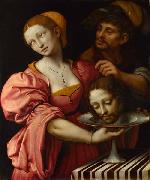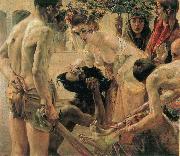Wholesale Oil Painting No Minimum |
|||||||||||
|
|
|||||||||||

|
|||||||||||
|
|
|
||||||||
Franz von StuckGerman Symbolist/Expressionist Painter and Sculptor, 1863-1928 Stuck was born at Tettenweis, in Bavaria. From an early age he displayed an affinity for drawing and caricature. To begin his artistic education in 1878 he went to Munich, where he would settle for life. From 1881 to 1885 Stuck attended the Munich Academy. He first made a name with cartoons for Fliegende Blätter, and vignette designs for programmes and book decoration. In 1889 he exhibited his first paintings at the Munich Glass Palace, winning a gold medal for The Guardian of Paradise. In 1892 Stuck co-founded the Munich Secession, and also executed his first sculpture, Athlete. The following year he won further acclaim with the critical and public success of what is now his most famous work, The Sin. Also in 1893, Stuck was awarded a gold medal for painting at the Chicago World's Fair and was appointed to a royal professorship. In 1895 he began teaching painting at the Munich Academy. In 1897 Stuck married an American widow, Mary Lindpainter, and began work designing his own residence and studio, the Villa Stuck. His designs for the villa included everything from layout to interior decorations; for his furniture Stuck received another gold medal at the 1900 Paris World Exposition. Having attained a high degree of fame by this time, Stuck was elevated to the aristocracy on December 9, 1905 and would receive further public honours from around Europe during the remainder of his life. Even as new trends in art left Stuck behind, he continued to be highly respected among young artists in his capacity as professor at the Munich Academy. Notable students of his over the years include Paul Klee, Hans Purrmann, Wassily Kandinsky, and Josef Albers. Franz von Stuck died in 1928; his funeral address memorialized him as "the last prince of art of Munich's great days". He is buried in the Munich Waldfriedhof next to his wife Mary. |
||||||||
|
|
||||||||
Salome
Salome Painting ID:: 3724 |
1906
Lenbachhaus, Munich 1906 Lenbachhaus, Munich |
|||||||
|
|
||||||||
GIAMPIETRINOItalian Painter, known ca.1500-1540 |
||||||||
|
|
||||||||
|
|
Salome
Salome Painting ID:: 42988 |
mk170
circa 1520
Oil on poplar
68.6x57.2cm
mk170 circa 1520 Oil on poplar 68.6x57.2cm |
||||||
|
|
||||||||
Cesare da SestoItalian High Renaissance Painter, 1477-1523, He was an Italian painter of the Renaissance active in Milan and elsewhere in Italy. He was born in Sesto Calende, Lombardy. He is considered one of the Leonardeschi or artists influenced by Leonardo da Vinci, such as Bernardino Luini and Marco D'Oggione. He may have trained or worked with Baldassare Peruzzi in Rome in 1505. Of this period, a lunette in Sant'Onofrio and some paintings in Campagnano Romano are attributed to him. From 1514 he soujourned in Naples for six years. In 1515 he finished a monumental polyptych for the Abbey of Santissima Trinita at Cava de' Tirreni. Back in Milan, he executed a Baptism of Christ, in collaboration with Bernardino Bernazzano (now lost) and a Salome, acquired by Rudolf II and now at the Kunsthistorisches Museum of Vienna. |
||||||||
|
|
||||||||
|
|
Salome
Salome Painting ID:: 42989 |
mk170
1515-1520
OIl on poplar
135.3x80cm
mk170 1515-1520 OIl on poplar 135.3x80cm |
||||||
|
|
||||||||
Gustave MoreauFrench 1826-1898 Moreau's main focus was the illustration of biblical and mythological figures. As a painter of literary ideas rather than visual images, he appealed to the imaginations of some Symbolist writers and artists, who saw him as a precursor to their movement. His father, Louis Jean Marie Moreau, was an architect, who recognized his talent. His mother was Adele Pauline des Moutiers. Moreau studied under François-Édouard Picot and became a friend of Th??odore Chass??riau, whose work strongly influenced his own. Moreau carried on a deeply personal 25-year relationship, possibly romantic, with Adelaide-Alexandrine Dureux, a woman whom he drew several times.[1] His first painting was a Piet?? which is now located in the cathedral at Angoul??me. He showed A Scene from the Song of Songs and The Death of Darius in the Salon of 1853. In 1853 he contributed Athenians with the Minotaur and Moses Putting Off his Sandals within Sight of the Promised Land to the Great Exhibition. Oedipus and the Sphinx, one of his first symbolist paintings, was exhibited at the Salon of 1864. Over his lifetime, he produced over 8,000 paintings, watercolors and drawings, many of which are on display in Paris' Mus??e national Gustave Moreau at 14, rue de la Rochefoucauld (IXe arrondissement). The museum is in his former workshop, and was opened to the public in 1903. Andr?? Breton famously used to "haunt" the museum and regarded Moreau as a precursor to Surrealism. He had become a professor at Paris' École des Beaux-Arts in 1891 and counted among his many students the fauvist painters, Henri Matisse and Georges Rouault. Moreau is buried in Paris' Cimeti??re de Montmartre. In Alan Moore's graphic novel, The League of Extraordinary Gentlemen, it is implied that he was a nephew of Doctor Moreau, and he based a few of his paintings on the Doctor's creations. |
||||||||
|
|
||||||||
|
|
Salome
Salome Painting ID:: 59958 |
Salome (1876).
Salome (1876). |
||||||
|
|
||||||||
Louis LcartFrench (1880-1950) Louis Icart was born in Toulouse, France. He began drawing at an early age. He was particularly interested in fashion, and became famous for his sketches almost immediately. He worked for major design studios at a time when fashion was undergoing a radical change-from the fussiness of the late nineteenth century to the simple, clingy lines of the early twentieth century. He was first son of Jean and Elisabeth Icart and was officially named Louis Justin Laurent Icart. The use of his initials L.I. would be sufficient in this household. Therefore, from the moment of his birth he was dubbed 'Helli'. The Icart family lived modestly in a small brick home on rue Traversi??re-de-la-balance, in the culturally rich Southern French city of Toulouse, which was the home of many prominent writers and artists, the most famous being Henri de Toulouse-Lautrec. Icart fought in World War I. He relied on his art to stem his anguish, sketching on every available surface. It was not until his move to Paris in 1907 that Icart would concentrate on painting, drawing and the production of countless beautiful etchings, which have served (more than the other mediums) to indelibly preserve his name in twentieth century art history. When he returned from the front he made prints from those drawings. The prints, most of which were aquatints and drypoints, showed great skill. Because they were much in demand, Icart frequently made two editions (one European, the other American) to satisfy his public. These prints are considered rare today, and when they are in mint condition they fetch high prices at auction. Art Deco, a term coined at the 1925 Paris Exposition des Arts Decoratifs, had taken its grip on the Paris of the 1920s. By the late 1920s Icart, working for both publications and major fashion and design studios, had become very successful, both artistically and financially. His etchings reached their height of brilliance in this era of Art Deco, and Icart had become the symbol of the epoch. Yet, although Icart has created for us a picture of Paris and New York life in the 1920s and 1930s, he worked in his own style, derived principally from the study of eighteenth-century French masters such as Jean Antoine Watteau, François Boucher and Jean Honor?? Fragonard. In Icart's drawings, one sees the Impressionists Degas and Monet and, in his rare watercolors, the Symbolists Odilon Redon and Gustave Moreau. In fact, Icart lived outside the fashionable artistic movements of the time and was not completely sympathetic to contemporary art. Nonetheless, his Parisian scenes are a documentation of the life he saw around him and they are nearly as popular today as when they were first produced. In 1914 Icart had met a magical, effervescent eighteen-year-old blonde named Fanny Volmers, at the time an employee of the fashion house Paquin. She would eventually become his wife and a source of artistic inspiration for the rest of his life. |
||||||||
|
|
||||||||
|
|
Salome
Salome Painting ID:: 63204 |
mk286 33 x 50.8 cm 1928 Nian mk286 33 x 50.8 cm 1928 Nian |
||||||
|
|
||||||||
Edvard MunchNorwegian 1863-1944 Edvard Munch Locations Edvard Munch (pronounced , December 12, 1863 ?C January 23, 1944) was a Norwegian Symbolist painter, printmaker, and an important forerunner of expressionistic art. His best-known composition, The Scream is one of the pieces in a series titled The Frieze of Life, in which Munch explored the themes of life, love, fear, death, and melancholy. Edvard Munch was born in a rustic farmhouse in the village of Adalsbruk in Loten, Norway to Christian Munch, the son of a prominent priest. Christian was a doctor and medical officer, who married Laura Cathrine Bjølstad, a woman half his age, in 1861. Edvard had an older sister, Johanne Sophie (born 1862), and three younger siblings: Peter Andreas (born 1865), Laura Cathrine (born 1867), and Inger Marie (born 1868). Both Sophie and Edvard appear to have gotten their art talent from their mother. Edvard Munch was related to painter Jacob Munch (1776?C1839) and historian Peter Andreas Munch (1810?C1863). The family moved to Kristiania (now Oslo) in 1864 when Christian Munch was appointed medical officer at Akershus Fortress. Edvard??s mother died of tuberculosis in 1868, as did Munch's favorite sister Johanne Sophie in 1877. After their mother's death, the Munch siblings were raised by their father and by their aunt Karen. Often ill for much of the winters and kept out of school, Edvard would draw to keep himself occupied. He also received tutoring from his school mates and his aunt. Christian Munch also instructed his son in history and literature, and entertained the children with vivid ghost stories and tales of Edgar Allan Poe. Christian??s positive behavior toward his children, however, was overshadowed by his morbid pietism. Munch wrote, ??My father was temperamentally nervous and obsessively religious??to the point of psychoneurosis. From him I inherited the seeds of madness. The angles of fear, sorrow, and death stood by my side since the day I was born.?? Christian reprimanded his children by telling them that their mother was looking down from heaven and grieving over their misbehavior. The oppressive religious milieu, plus Edvard??s poor health and the vivid ghost stories, helped inspire macabre visions and nightmares in Edvard, who felt death constantly advancing on him. One of Munch's younger sisters was diagnosed with mental illness at an early age. Of the five siblings only Andreas married, but he died a few months after the wedding. Munch would later write, "I inherited two of mankind's most frightful enemies??the heritage of consumption and insanity." Christian Munch??s military pay was very low, and his attempts at developing a private side practice failed, keeping his family in perrenial poverty. They moved frequently from one sordid flat to another. Munch??s early drawings and watercolors depicted these interiors, and the individual objects such as medicine bottles and drawing implements, plus some landscapes. By his teens, art dominated Munch??s interests. At thirteen, Munch has his first exposure to other artists at the newly formed Art Association, were he admired the work of the Norwegian landscape school, and where he returned to copy the paintings, and soon he began to paint in oils. |
||||||||
|
|
||||||||
|
|
salome
salome Painting ID:: 69221 |
1903, 40.5x30.5cm
se 1903, 40.5x30.5cm se |
||||||
|
|
||||||||
Alonso Berruguete(Alonso Berruguete) (c. 1488 - 1561) was a Spanish painter, sculptor and architect. He is considered to be the most important sculptor of the Spanish Renaissance, and is known for his emotive sculptures depicting religious ecstasy or torment. Born in the town of Paredes de Nava, Berrugete studied art under the tutelage of his father, the painter Pedro Berruguete. Following his father's death in 1504, Berruguete travelled to Italy to continue with his study of art, spending most of his time in Florence and Rome. It is here that he studied sculpture under the Italian Master, Michelangelo. His paintings produced in Italy showed a mannerist influence, with his art being compared with contemporaries such as Jacopo Pontormo and Rosso Fiorentino. Berruguete returned to Spain in 1517, and in 1518, was appointed to the position of court painter and sculptor by Charles V of Spain. From this point in his career forward, Berruguete concentrated on sculpture. Works of his include an altar piece at the Irish college in Salamanca (1529-1533), choir stalls at the Cathedral of Toledo (1539-1543) and a tomb for the Archbishop of Toledo Juan de Tavera at the hospital that Tavera founded, the hospital of St. John the Baptist in Toledo (1552-1561). |
||||||||
|
|
||||||||
|
|
Salome
Salome Painting ID:: 74472 |
ca. between 1512(1512) and 1517(1517)
Oil on panel
88 X 71 cm (34.65 X 27.95 in)
cjr ca. between 1512(1512) and 1517(1517) Oil on panel 88 X 71 cm (34.65 X 27.95 in) cjr |
||||||
|
|
||||||||
Alonso Berruguete(Alonso Berruguete) (c. 1488 - 1561) was a Spanish painter, sculptor and architect. He is considered to be the most important sculptor of the Spanish Renaissance, and is known for his emotive sculptures depicting religious ecstasy or torment. Born in the town of Paredes de Nava, Berrugete studied art under the tutelage of his father, the painter Pedro Berruguete. Following his father's death in 1504, Berruguete travelled to Italy to continue with his study of art, spending most of his time in Florence and Rome. It is here that he studied sculpture under the Italian Master, Michelangelo. His paintings produced in Italy showed a mannerist influence, with his art being compared with contemporaries such as Jacopo Pontormo and Rosso Fiorentino. Berruguete returned to Spain in 1517, and in 1518, was appointed to the position of court painter and sculptor by Charles V of Spain. From this point in his career forward, Berruguete concentrated on sculpture. Works of his include an altar piece at the Irish college in Salamanca (1529-1533), choir stalls at the Cathedral of Toledo (1539-1543) and a tomb for the Archbishop of Toledo Juan de Tavera at the hospital that Tavera founded, the hospital of St. John the Baptist in Toledo (1552-1561). |
||||||||
|
|
||||||||
|
|
Salome
Salome Painting ID:: 75896 |
Date ca. between 1512(1512) and 1517(1517)
Medium Oil on panel
Dimensions 88 ?? 71 cm (34.6 ?? 28 in)
cyf Date ca. between 1512(1512) and 1517(1517) Medium Oil on panel Dimensions 88 ?? 71 cm (34.6 ?? 28 in) cyf |
||||||
|
|
||||||||
GIAMPIETRINOItalian Painter, known ca.1500-1540 |
||||||||
|
|
||||||||
|
|
Salome
Salome Painting ID:: 82279 |
Date ca. 1510--30(1510--30)
Medium Oil on poplar
Dimensions 68.6 x 57.2 cm (27 x 22.5 in)
cjr Date ca. 1510--30(1510--30) Medium Oil on poplar Dimensions 68.6 x 57.2 cm (27 x 22.5 in) cjr |
||||||
|
|
||||||||
Lucas CranachKronach 1472-Weimar 1553 German painter and engraver. The son of a painter, he settled in Wittenberg c.1504 and was court painter successively under three electors of Saxony. There he maintained a flourishing workshop and was twice burgomaster. Cranach was a close friend of Martin Luther, whose doctrine he upheld in numerous paintings and woodcuts, and he has been called the painter of the Reformation. He was a rapid and prolific painter, and the work turned out by his studio is uneven in quality. Naïve and fanciful, often awkward in draftsmanship, it has, nonetheless, freshness and originality and a warm, rich palette. His portraits are particularly successful. Among his best-known works are Repose in Egypt (Gemäldgalerie, Staatliche Mus., Berlin-Dahlem); Judgment of Paris (Staatliche Kunsthalle, Karlsruhe); Adam and Eve (Courtauld Inst., London); and Crucifixion (Weimar). The latter contains figures of Luther and Cranach. His many famous protraits include those of Elector John Frederick and Self-Portrait (Uffizi). Cranach was also an accomplished miniaturist. He produced a few copperplates and designs for woodcuts. His son and pupil Lucas Cranach, the Younger, |
||||||||
|
|
||||||||
|
|
Salome
Salome Painting ID:: 83809 |
Date ca. 1530(1530)
Medium Oil on poplar
cjr Date ca. 1530(1530) Medium Oil on poplar cjr |
||||||
|
|
||||||||
GIAMPIETRINOItalian Painter, known ca.1500-1540 |
||||||||
|
|
||||||||
|
|
Salome
Salome Painting ID:: 85886 |
1510--30(1510--30)
Medium Oil on poplar
Dimensions 68.6 x 57.2 cm (27 x 22.5 in)
cyf 1510--30(1510--30) Medium Oil on poplar Dimensions 68.6 x 57.2 cm (27 x 22.5 in) cyf |
||||||
|
|
||||||||
Lucas CranachKronach 1472-Weimar 1553 German painter and engraver. The son of a painter, he settled in Wittenberg c.1504 and was court painter successively under three electors of Saxony. There he maintained a flourishing workshop and was twice burgomaster. Cranach was a close friend of Martin Luther, whose doctrine he upheld in numerous paintings and woodcuts, and he has been called the painter of the Reformation. He was a rapid and prolific painter, and the work turned out by his studio is uneven in quality. Naïve and fanciful, often awkward in draftsmanship, it has, nonetheless, freshness and originality and a warm, rich palette. His portraits are particularly successful. Among his best-known works are Repose in Egypt (Gemäldgalerie, Staatliche Mus., Berlin-Dahlem); Judgment of Paris (Staatliche Kunsthalle, Karlsruhe); Adam and Eve (Courtauld Inst., London); and Crucifixion (Weimar). The latter contains figures of Luther and Cranach. His many famous protraits include those of Elector John Frederick and Self-Portrait (Uffizi). Cranach was also an accomplished miniaturist. He produced a few copperplates and designs for woodcuts. His son and pupil Lucas Cranach, the Younger, |
||||||||
|
|
||||||||
|
|
Salome
Salome Painting ID:: 86430 |
Date c. 1530(1530)
Medium Oil on poplar
Dimensions Height: 87 cm (34.3 in). Width: 58 cm (22.8 in).
cjr Date c. 1530(1530) Medium Oil on poplar Dimensions Height: 87 cm (34.3 in). Width: 58 cm (22.8 in). cjr |
||||||
|
|
||||||||
Lucas CranachKronach 1472-Weimar 1553 German painter and engraver. The son of a painter, he settled in Wittenberg c.1504 and was court painter successively under three electors of Saxony. There he maintained a flourishing workshop and was twice burgomaster. Cranach was a close friend of Martin Luther, whose doctrine he upheld in numerous paintings and woodcuts, and he has been called the painter of the Reformation. He was a rapid and prolific painter, and the work turned out by his studio is uneven in quality. Naïve and fanciful, often awkward in draftsmanship, it has, nonetheless, freshness and originality and a warm, rich palette. His portraits are particularly successful. Among his best-known works are Repose in Egypt (Gemäldgalerie, Staatliche Mus., Berlin-Dahlem); Judgment of Paris (Staatliche Kunsthalle, Karlsruhe); Adam and Eve (Courtauld Inst., London); and Crucifixion (Weimar). The latter contains figures of Luther and Cranach. His many famous protraits include those of Elector John Frederick and Self-Portrait (Uffizi). Cranach was also an accomplished miniaturist. He produced a few copperplates and designs for woodcuts. His son and pupil Lucas Cranach, the Younger, |
||||||||
|
|
||||||||
|
|
Salome
Salome Painting ID:: 87706 |
1530(1530)
Medium Oil on poplar
cyf 1530(1530) Medium Oil on poplar cyf |
||||||
|
|
||||||||
Franz von StuckGerman Symbolist/Expressionist Painter and Sculptor, 1863-1928 Stuck was born at Tettenweis, in Bavaria. From an early age he displayed an affinity for drawing and caricature. To begin his artistic education in 1878 he went to Munich, where he would settle for life. From 1881 to 1885 Stuck attended the Munich Academy. He first made a name with cartoons for Fliegende Blätter, and vignette designs for programmes and book decoration. In 1889 he exhibited his first paintings at the Munich Glass Palace, winning a gold medal for The Guardian of Paradise. In 1892 Stuck co-founded the Munich Secession, and also executed his first sculpture, Athlete. The following year he won further acclaim with the critical and public success of what is now his most famous work, The Sin. Also in 1893, Stuck was awarded a gold medal for painting at the Chicago World's Fair and was appointed to a royal professorship. In 1895 he began teaching painting at the Munich Academy. In 1897 Stuck married an American widow, Mary Lindpainter, and began work designing his own residence and studio, the Villa Stuck. His designs for the villa included everything from layout to interior decorations; for his furniture Stuck received another gold medal at the 1900 Paris World Exposition. Having attained a high degree of fame by this time, Stuck was elevated to the aristocracy on December 9, 1905 and would receive further public honours from around Europe during the remainder of his life. Even as new trends in art left Stuck behind, he continued to be highly respected among young artists in his capacity as professor at the Munich Academy. Notable students of his over the years include Paul Klee, Hans Purrmann, Wassily Kandinsky, and Josef Albers. Franz von Stuck died in 1928; his funeral address memorialized him as "the last prince of art of Munich's great days". He is buried in the Munich Waldfriedhof next to his wife Mary. |
||||||||
|
|
||||||||
|
|
Salome
Salome Painting ID:: 90948 |
1906(1906)
Medium oil on canvas
Dimensions Deutsch: 115,5 x 62,5 cm
cyf 1906(1906) Medium oil on canvas Dimensions Deutsch: 115,5 x 62,5 cm cyf |
||||||
|
|
||||||||
Robert Henri1865-1929 Robert Henri was born Robert Henry Cozad in Miami, Florida to Theresa Gatewood Cozad of Malden, Virginia and John Jackson Cozad, a gambler and real estate developer. Henri had a brother, Johnny, and was a distant cousin of the noted American painter Mary Cassatt. In 1871, Henri's father founded the town of Cozaddale, Ohio. In 1873, the family moved west to Nebraska, where they founded the town of Cozad. In October 1882, Henri's father became embroiled in a dispute with a rancher, Alfred Pearson, over the right to pasture cattle on land claimed by the family. When the dispute turned physical, Cozad shot Pearson fatally with a pistol. Cozad was eventually cleared of wrongdoing, but the mood of the town turned against him. He fled to Denver, Colorado, and the rest of the family followed shortly. In order to disassociate themselves from the scandal, family members changed their names. The father became known as Richard Henry Lee, and his sons posed as adopted children under the names Frank Southern and Robert Earl Henri (pronounced "hen rye"). In 1883, the family moved to New York City, then to Atlantic City, New Jersey, where the young artist completed his first paintings. |
||||||||
|
|
||||||||
|
|
Salome
Salome Painting ID:: 94047 |
Date:?
TTD Date:? TTD |
||||||
|
|
||||||||
GIAMPIETRINOItalian Painter, known ca.1500-1540 |
||||||||
|
|
||||||||
|
|
Salome
Salome Painting ID:: 96605 |
1510--30(1510--30)
Medium oil on poplar wood
Dimensions 68.6 X 57.2 cm
cyf 1510--30(1510--30) Medium oil on poplar wood Dimensions 68.6 X 57.2 cm cyf |
||||||
|
|
||||||||
Lovis CorinthGerman Painter, 1858-1925 German painter and writer. He grew up on his family's farm and tannery. As a child he showed interest in art, taking informal lessons in drawing from a local carpenter and caricaturing his primary school teachers. Corinth's father sent him to secondary school in the nearby city of K?nigsberg (now Kaliningrad), where he lived with his widowed aunt. A superstitious woman fond of story-telling, she possessed what Corinth later described as a coarse temperament and an unrestrained, 'demonic' humour. These qualities and his aunt's bohemian acquaintances, including fortune-tellers and soothsayers, fascinated the young Corinth, accustomed to his more reserved parents. |
||||||||
|
|
||||||||
|
|
Salome
Salome Painting ID:: 97996 |
1900(1900)
Medium oil on canvas
Dimensions 127 x 147 cm
cyf 1900(1900) Medium oil on canvas Dimensions 127 x 147 cm cyf |
||||||
|
|
||||||||
|
Lovis Corinth German Painter, 1858-1925 German painter and writer. He grew up on his family's farm and tannery. As a child he showed interest in art, taking informal lessons in drawing from a local carpenter and caricaturing his primary school teachers. Corinth's father sent him to secondary school in the nearby city of K?nigsberg (now Kaliningrad), where he lived with his widowed aunt. A superstitious woman fond of story-telling, she possessed what Corinth later described as a coarse temperament and an unrestrained, 'demonic' humour. These qualities and his aunt's bohemian acquaintances, including fortune-tellers and soothsayers, fascinated the young Corinth, accustomed to his more reserved parents. Salome 1900(1900) Medium oil on canvas Dimensions 127 x 147 cm cyf |
||||||||
|
|
||||||||
|
Prev Next
|
||||||||
|
|
||||||||
|
Related Paintings to Lovis Corinth :. |
||||||||
|
|
||||||||
|
CONTACT US |
